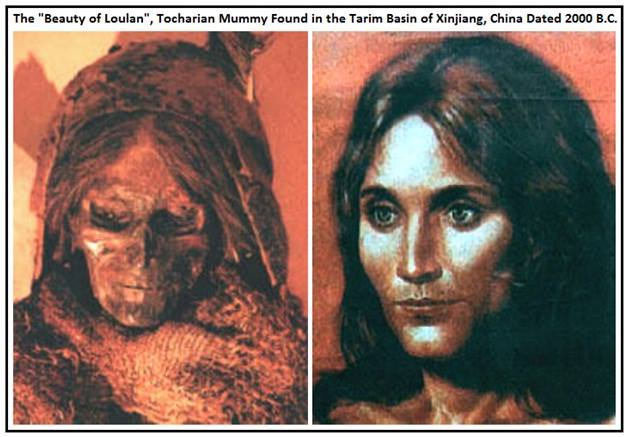Prekolumbijska swastyka wężowa Hopewell, znaleziona w Dolinie Missisipi w USA
nadesłał Furio Muerte

Pre-Columbian Hopewell Native American serpent swastika, found in the Mississippi Valley, USA dated to around 200 BC.
Prekolumbijska swastyka wężowa Hopewell, znaleziona w Dolinie Missisipi w USA, datowana na około 200 r pne.
European Dragon Haplogroup X

„Time estimates for the arrival of X in North America are 12,000–36,000 years ago, depending on the number of assumed founders, thus supporting the conclusion that the peoples harboring haplogroup X were among the original founders of Native American populations. To date, haplogroup X has not been unambiguously identified in Asia, raising the possibility that some Native American founders were of Caucasian ancestry.”
mtDNA Haplogroup X: An Ancient Link between Europe/Western Asia and North America?
Summary
On the basis of comprehensive RFLP analysis, it has been inferred that ∼97% of Native American mtDNAs belong to one of four major founding mtDNA lineages, designated haplogroups “A”–“D.” It has been proposed that a fifth mtDNA haplogroup (haplogroup X) represents a minor founding lineage in Native Americans. Unlike haplogroups A–D, haplogroup X is also found at low frequencies in modern European populations. To investigate the origins, diversity, and continental relationships of this haplogroup, we performed mtDNA high-resolution RFLP and complete control region (CR) sequence analysis on 22 putative Native American haplogroup X and 14 putative European haplogroup X mtDNAs. The results identified a consensus haplogroup X motif that characterizes our European and Native American samples. Among Native Americans, haplogroup X appears to be essentially restricted to northern Amerindian groups, including the Ojibwa, the Nuu-Chah-Nulth, the Sioux, and the Yakima, although we also observed this haplogroup in the Na-Dene–speaking Navajo. Median network analysis indicated that European and Native American haplogroup X mtDNAs, although distinct, nevertheless are distantly related to each other. Time estimates for the arrival of X in North America are 12,000–36,000 years ago, depending on the number of assumed founders, thus supporting the conclusion that the peoples harboring haplogroup X were among the original founders of Native American populations. To date, haplogroup X has not been unambiguously identified in Asia, raising the possibility that some Native American founders were of Caucasian ancestry.
więcej u źródła:
https://www.sciencedirect.com/…/pii/S0002929707616292…

„Haplogroup X was subsequently discovered in one western Siberian group resident in the Altai Mountains. The latter region, however, was the home of the ancient Tocharians, a Scythian people of Indo-European origin; and this region marked the easternmost reach of Indo-European settlement. That it was to the Tocharians that the Siberian X Haplogroup owed its origin is confirmed by the subgroup to which the DNA belonged. According to Wikipedia, „…the Altaian sequence are almsot identical (Haplogroup X2e), suggesting that they arrived in the area possibly from the South Caucasus more recently than 5,000 BP.”
Atlantis: The Evidence of Science
Atlantis: The Evidence of Science
https://www.facebook.com/Scythian-Dragon-Empire-II-2309238812642987/photos/2798513770382153
Prekolumbijska swastyka wężowa Hopewell, znaleziona w Dolinie Missisipi w USA, datowana na około 200 rpne. Haplogrupa Smoków Europejskich X „Szacowany czas przybycia X do Ameryki Północnej wynosi 12 000–36 000 lat temu, w zależności od liczby zakładanych założycieli, co potwierdza wniosek, że ludy noszące haplogrupę X należały do pierwotnych założycieli populacji rdzennych Amerykanów. Do tej pory haplogrupa X nie został jednoznacznie zidentyfikowany w Azji, co sugeruje, że niektórzy założyciele rdzenni Amerykanie mieli pochodzenie kaukaskie”. https://www.sciencedirect.com/…/pii/S0002929707616292…
Streszczenie
Atlantyda: dowód nauki https://www.facebook.com/Scythian-Dragon-Empire-II-2309238812642987/photos/2798513770382153
